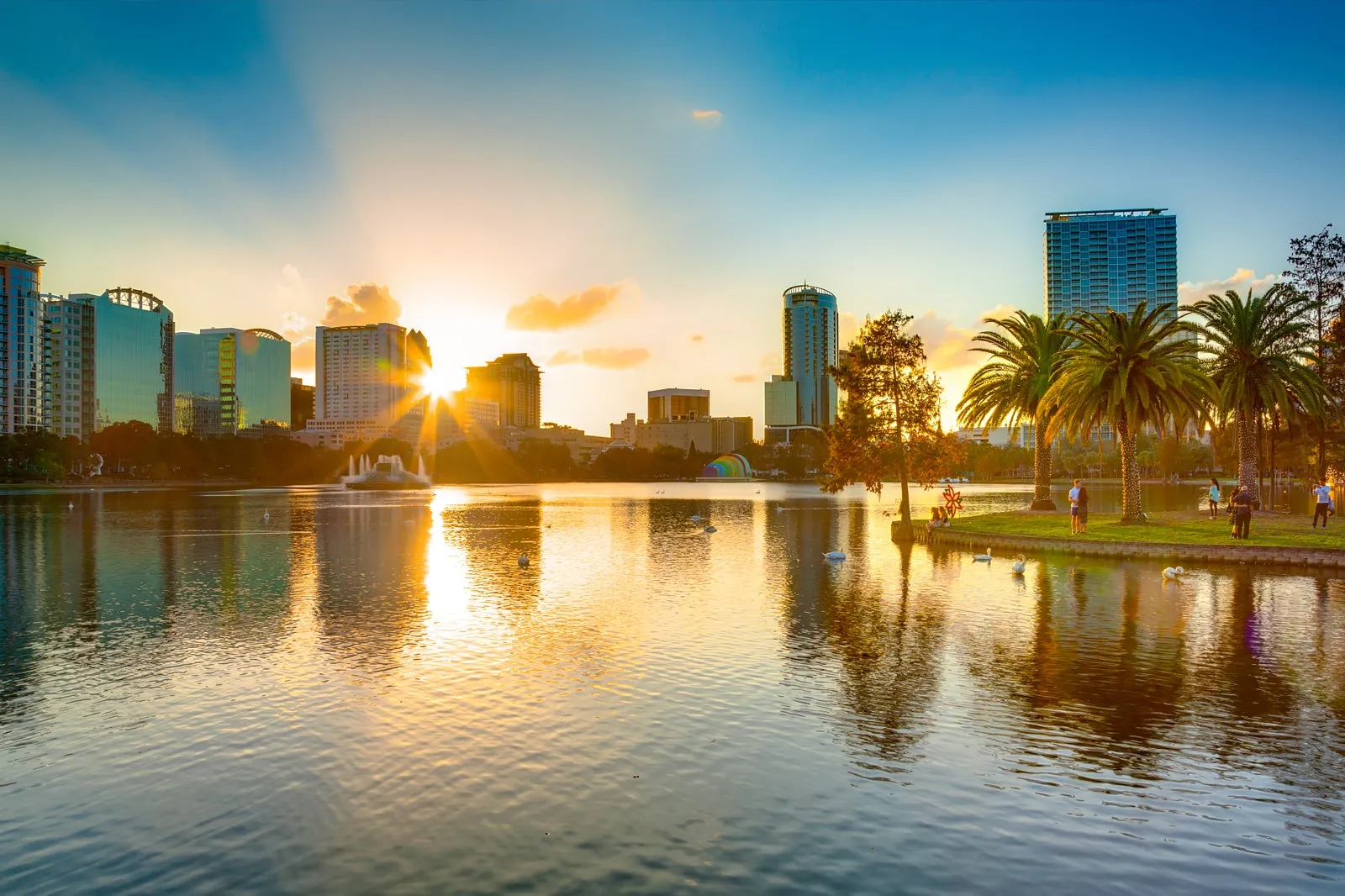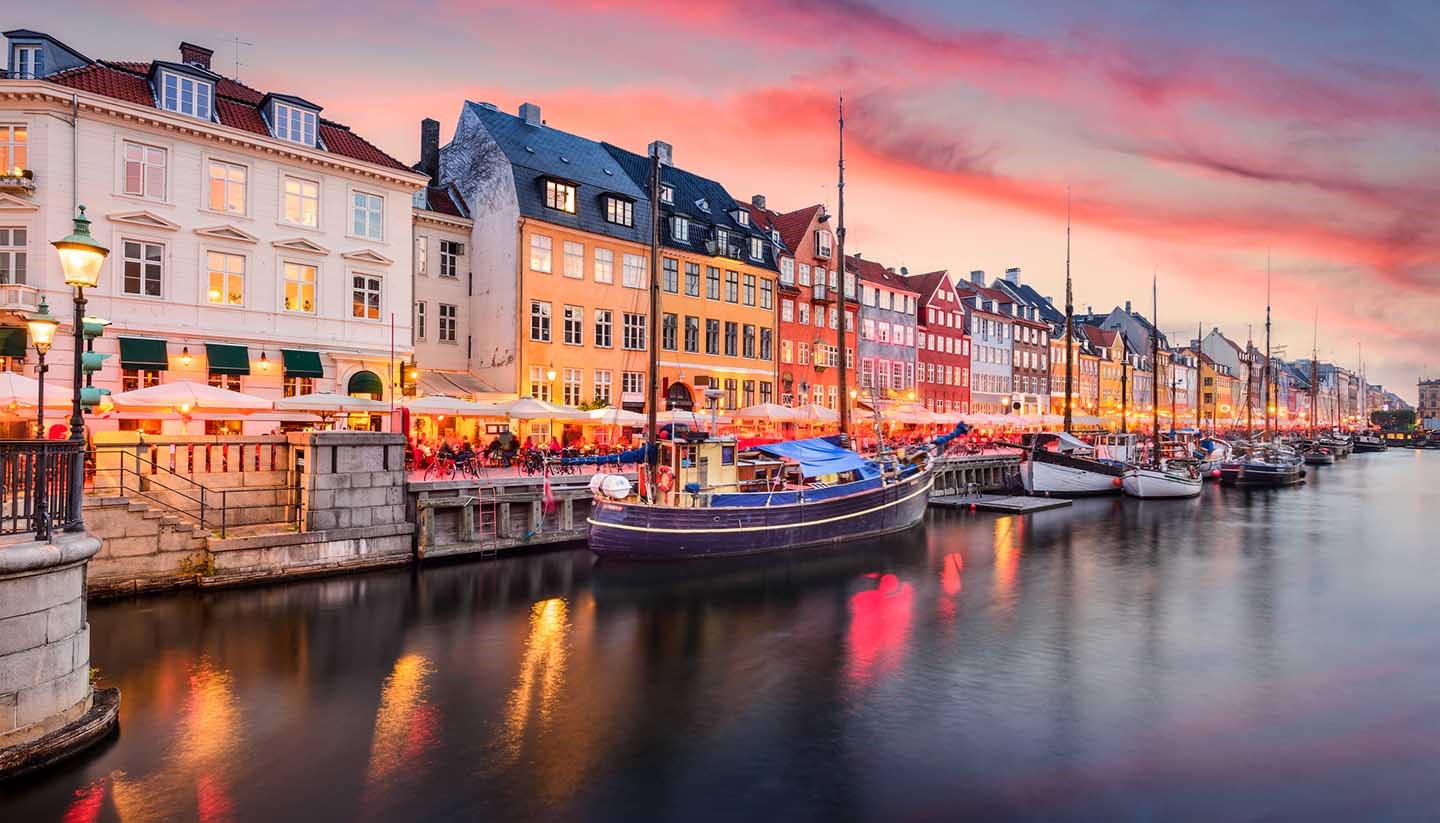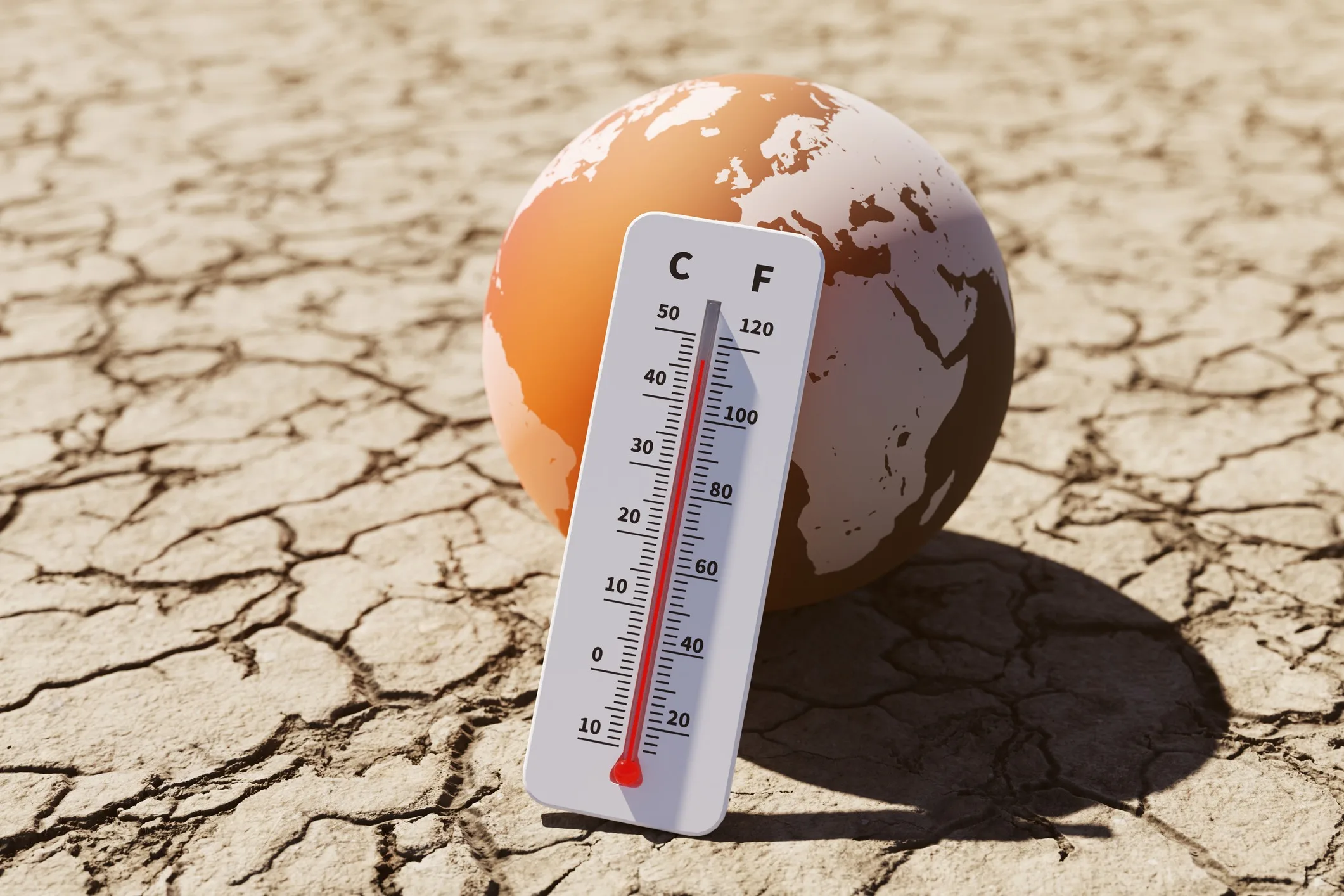Home>Weather and Climate>Orlando’s Average Temperature: A Comprehensive Guide


Weather and Climate
Orlando’s Average Temperature: A Comprehensive Guide
Published: February 29, 2024
Discover Orlando's average temperature and climate throughout the year. Plan your visit with our comprehensive weather guide. Explore the best times to experience Orlando's weather and climate.
(Many of the links in this article redirect to a specific reviewed product. Your purchase of these products through affiliate links helps to generate commission for Temperatures.com, at no extra cost. Learn more)
Table of Contents
Understanding Orlando's Climate
Orlando, Florida, is renowned for its warm and inviting climate, attracting visitors from around the world. The city's climate is classified as humid subtropical, characterized by hot and humid summers and mild winters. Understanding the nuances of Orlando's climate is essential for residents, tourists, and businesses alike.
The city experiences an average annual temperature of around 72°F (22°C), with variations throughout the year. Summers in Orlando are notably hot and humid, with temperatures often soaring into the 90s°F (32-37°C). The humidity adds to the perceived temperature, making the summer months feel even hotter. In contrast, winters are relatively mild, with average temperatures ranging from 50-70°F (10-21°C). This pleasant winter climate is one of the reasons why Orlando is a popular destination during the colder months.
Orlando's climate is also influenced by its proximity to the Gulf of Mexico and the Atlantic Ocean. The warm waters of these bodies of water contribute to the overall warmth and humidity of the region. Additionally, the city's inland location shields it from the full impact of tropical storms and hurricanes that often affect coastal areas.
Understanding Orlando's climate involves recognizing the significance of its rainy season, which typically occurs from June to September. During this period, afternoon thunderstorms are common, providing relief from the intense heat and contributing to the lush greenery that blankets the region.
The city's climate plays a pivotal role in shaping its identity as a hub for outdoor activities and attractions. From water parks to outdoor festivals, Orlando's climate influences the range of leisure activities available to residents and visitors throughout the year. Moreover, the warm and sunny weather serves as a catalyst for the city's thriving tourism industry, drawing millions of visitors annually.
In essence, understanding Orlando's climate involves appreciating its year-round warmth, seasonal variations, and the impact of its subtropical classification. This understanding not only enriches the experience of living in or visiting Orlando but also underscores the importance of climate awareness in the context of urban planning and environmental sustainability.
Factors Affecting Orlando's Average Temperature
Orlando's average temperature is influenced by a myriad of factors, each playing a crucial role in shaping the city's climate. Understanding these factors provides valuable insights into the dynamics of Orlando's temperature patterns and the broader climatic context of the region.
-
Latitude and Solar Insolation: Orlando's location near the Tropic of Cancer significantly impacts its average temperature. The city experiences relatively high solar insolation throughout the year due to its proximity to the equator. This abundance of solar radiation contributes to the warmth and overall balminess of the region.
-
Proximity to Water Bodies: Orlando's proximity to the Gulf of Mexico and the Atlantic Ocean moderates its temperature extremes. The presence of these large water bodies helps regulate the city's temperature by absorbing and releasing heat more slowly than land. This phenomenon results in milder winters and slightly cooler summers compared to inland areas at similar latitudes.
-
Urban Heat Island Effect: The rapid urbanization and extensive infrastructure in Orlando have led to the development of urban heat islands. These areas experience higher temperatures than their rural surroundings due to the absorption and retention of heat by buildings, roads, and other urban structures. As a result, urban areas in Orlando may exhibit slightly higher average temperatures than the surrounding rural areas.
-
Vegetation and Land Use: The type and extent of vegetation cover in and around Orlando play a role in influencing its average temperature. Urban areas with limited green spaces and vegetation tend to experience higher temperatures due to reduced evaporative cooling and increased heat retention. Conversely, areas with ample vegetation and green spaces may exhibit slightly lower average temperatures, as vegetation provides shade and contributes to cooling through transpiration.
-
Weather Patterns and Air Masses: Orlando's average temperature is also influenced by prevailing weather patterns and the movement of air masses. The city's location within the subtropical belt exposes it to a variety of air masses, including maritime tropical air from the Gulf of Mexico and the Atlantic Ocean, as well as continental tropical air from the interior of the continent. The interaction of these air masses contributes to the seasonal variations in temperature experienced in Orlando.
Understanding the interplay of these factors provides a comprehensive perspective on the complexities that govern Orlando's average temperature. From natural geographical influences to anthropogenic factors, each element contributes to the unique thermal profile of the city, shaping the daily experiences of its residents and visitors alike.
Seasonal Variations in Orlando's Temperature
Orlando's temperature undergoes distinct seasonal variations, each contributing to the city's diverse and dynamic climate. Understanding these fluctuations is essential for residents and visitors to adapt to the changing weather patterns and make the most of the unique experiences offered throughout the year.
Summer:
During the summer months, Orlando experiences its most intense heat and humidity. From June to August, average temperatures soar into the 90s°F (32-37°C), often accompanied by high levels of humidity. The combination of heat and moisture creates a sweltering environment, prompting residents and visitors to seek refuge in air-conditioned spaces or cool off in the numerous water parks and recreational water bodies scattered across the city. Despite the heat, summer in Orlando also brings extended daylight hours, allowing for ample opportunities to explore outdoor attractions and partake in evening events under the warm, starlit sky.
Autumn:
Autumn in Orlando marks a transition from the scorching heat of summer to milder and more pleasant temperatures. From September to November, average temperatures gradually decrease, offering relief from the summer swelter. The humidity levels also begin to recede, creating a more comfortable outdoor environment. This seasonal shift heralds the onset of popular events and festivals, drawing locals and tourists alike to enjoy the temperate weather while engaging in a myriad of outdoor activities, such as nature walks, al fresco dining, and cultural celebrations.
Winter:
Orlando's winter, spanning from December to February, is characterized by mild and relatively dry conditions. Average temperatures range from 50-70°F (10-21°C), creating a comfortable and inviting atmosphere for outdoor exploration and leisure. While occasional cold fronts may bring brief periods of cooler weather, the overall winter climate in Orlando remains favorable for outdoor pursuits, including visits to theme parks, nature reserves, and outdoor dining venues. The city's mild winter climate also attracts snowbirds and vacationers seeking respite from harsher winter conditions in other parts of the country.
Spring:
Spring in Orlando, from March to May, marks the return of warmer temperatures and increased humidity. The city's natural surroundings burst to life with vibrant blooms and lush foliage, creating a picturesque backdrop for outdoor adventures and recreational pursuits. Average temperatures gradually rise, signaling the transition to the upcoming summer season. Springtime in Orlando offers an ideal climate for various outdoor activities, including hiking, wildlife observation, and enjoying the numerous botanical gardens and nature reserves that showcase the region's diverse flora and fauna.
In essence, Orlando's seasonal temperature variations contribute to the city's multifaceted appeal, offering a spectrum of climate experiences throughout the year. From the sizzling heat of summer to the mild winters and blossoming springs, each season brings its own unique charm, shaping the city's cultural events, outdoor recreation, and visitor experiences.
Historical Trends in Orlando's Average Temperature
Over the past century, Orlando has witnessed notable shifts in its average temperature, reflecting the broader patterns of climate variability and change. Historical data reveals compelling insights into the long-term trends that have shaped the city's thermal profile, providing valuable context for understanding its evolving climate dynamics.
The historical temperature records for Orlando indicate a discernible warming trend, with average temperatures exhibiting a gradual increase over the decades. This upward trajectory aligns with global climate trends and underscores the impact of anthropogenic influences on regional climates. The warming trend is particularly pronounced in the summer months, where average temperatures have shown a consistent rise, contributing to more frequent and intense heatwaves during the peak of the season.
Moreover, the historical data illustrates fluctuations in temperature extremes, with instances of both record-breaking heat and anomalous cold spells. These extremes serve as indicators of the city's susceptibility to climatic variability and the potential influence of broader atmospheric phenomena, such as El Niño and La Niña events, on Orlando's temperature patterns.
In addition to rising average temperatures, historical trends also reveal shifts in precipitation patterns and the frequency of extreme weather events, all of which contribute to the complex tapestry of Orlando's climate history. The interplay between temperature, precipitation, and extreme events underscores the interconnected nature of climatic factors and their collective impact on the city's environment and inhabitants.
Furthermore, the historical trends in Orlando's average temperature serve as a vital resource for climate scientists, urban planners, and policymakers, informing strategies for climate resilience, infrastructure development, and sustainable urban design. By analyzing the long-term temperature data, stakeholders can gain a deeper understanding of the city's vulnerability to climate change and develop proactive measures to mitigate potential risks and enhance adaptive capacity.
In essence, the historical trends in Orlando's average temperature provide a compelling narrative of the city's climatic evolution, offering valuable insights into the intersection of natural variability and human-induced influences. By examining these historical trends, we can glean essential knowledge that informs our approach to addressing contemporary climate challenges and fostering a resilient and sustainable future for Orlando and its residents.
Impact of Orlando's Average Temperature on Daily Life
The average temperature in Orlando exerts a profound influence on the daily lives of its residents and visitors, permeating various facets of urban existence and shaping a distinctive rhythm that mirrors the city's climatic nuances.
The sweltering heat of summer engenders a lifestyle centered around seeking respite from the sun's intensity. Residents and tourists alike adapt their daily routines to accommodate the high temperatures, often opting for early morning or evening outdoor activities to avoid the peak heat of the day. The prevalence of air-conditioned spaces becomes a vital sanctuary during the scorching summer months, offering a reprieve from the relentless heat and enabling individuals to carry on with their daily tasks and leisure pursuits in a more comfortable environment.
Moreover, the warm and inviting winter climate fosters a vibrant outdoor culture, encouraging residents and visitors to engage in a myriad of al fresco activities, from dining at sidewalk cafes to exploring the city's numerous parks and nature reserves. The mild winter temperatures create an ideal backdrop for social gatherings and community events, enhancing the quality of daily life and fostering a sense of connectedness within the city's diverse neighborhoods.
The seasonal variations in temperature also influence the city's cultural calendar, shaping the timing and nature of festivals, outdoor events, and recreational offerings. From the lively celebrations of spring to the festive holiday atmosphere of winter, Orlando's average temperature serves as a backdrop for a rich tapestry of cultural experiences that define the city's social fabric and contribute to its vibrant allure.
Furthermore, the impact of Orlando's average temperature extends to the realm of urban planning and infrastructure, influencing the design of public spaces, transportation systems, and architectural considerations. The need to mitigate the urban heat island effect and enhance thermal comfort in outdoor settings underscores the city's commitment to creating a sustainable and livable environment that harmonizes with its climatic conditions.
In essence, Orlando's average temperature permeates the daily lives of its inhabitants, shaping their routines, leisure choices, and communal interactions. By embracing the unique thermal identity of the city, residents and visitors forge a symbiotic relationship with the climate, weaving it into the fabric of their daily experiences and contributing to the vibrant tapestry of life in Orlando.














